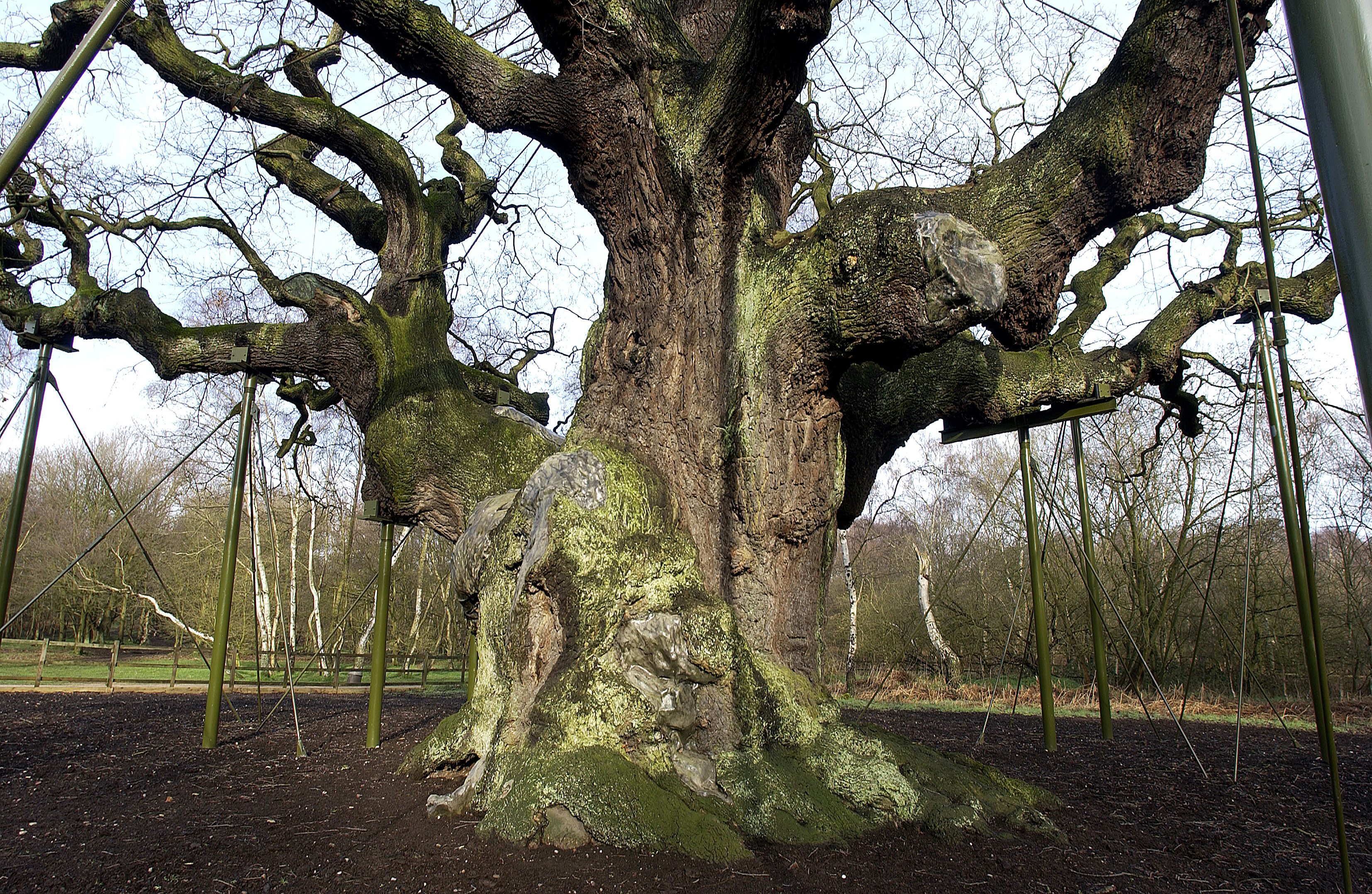Lost Woods Veteran Tree Recording Project
Hilary Hinks, ATI Recorder for the Lost Woods Project, 18/11/2022
With the aim to transform the landscape that sits between the South Downs National Park and the High Weald Area of Outstanding Natural Beauty, the ‘Lost Woods of the Low Weald and Downs’ is an exciting project taking place in the South East region of the UK.
In October 2022, following a two-year development phase, the Trust was granted a further £2.03 million from The National Lottery Heritage Fund to deliver a full programme that will bring life back to the forgotten woods in this area. Alongside our partner organisations – Action in Rural Sussex, Sussex Wildlife Trust and Small Woods Association- the Woodland Trust are planning a great deal of action, including work with local woodland owners and communities and an ambitious target of recording all ancient, veteran and notable trees in the project area.
The latter is where a small team of volunteer Ancient Tree Recorders come in. A merry band of tree lovers, with varying excellent skills, expertise and enthusiasm, the group has been fundamental in developing and trialling a methodology as part of the project so far. Someone who has made a significant impact with her involvement is Woodland Trust member and volunteer, Hilary Hinks, who talks here about her commitment to the cause and why she is a huge fan of hugging elderly trees…
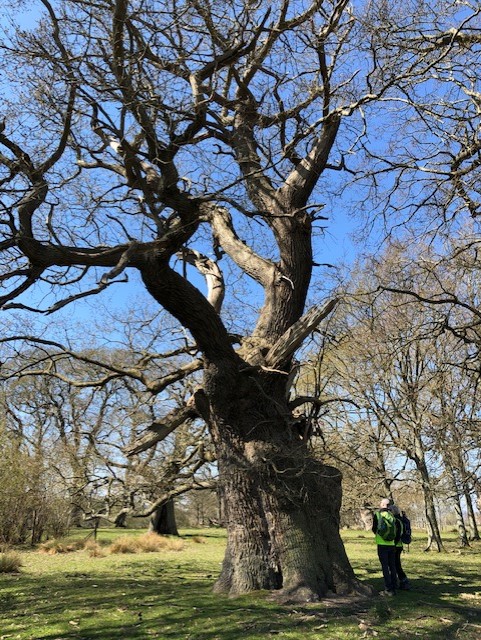
One of many veteran oaks visited during a recording day at Parham Park.
“I first heard about the Lost Woods’ project in September, 2019. My Tree Warden contact at West Sussex County Council sent out an email containing some background about the volunteer role provided by the Woodland Trust and a link to the online application form. I clicked on it – and the rest is history!!!”
Hilary was interested in climbing aboard for several reasons; not only has she lived on the border of the Low Weald for many years and considers it her stomping ground, but the volunteer role was very specific. She felt that any project that was looking to improve and protect the landscape; locate, measure and map all the ancient and veteran trees (AVTs) in the area, and involve communities with their local woods, ticked all the right boxes for her. This sort of landscape scale conservation has not been done before by the Woodland Trust, so Hilary was excited that this was a “ground-breaking” piece of work.
As someone who has previously been recognised at the Woodland Trust’s volunteer awards for her work supporting the South East region’s Outreach team, it was obvious that she should be involved.

Tom (ATI Citizen Science Officer), Hilary and Jeremy measuring a huge ancient oak at Petworth Park, 2022.
“As a volunteer, I always want to learn more, make a useful contribution, have fun and meet - and get to know – new like-minded people. All I hope for is that anything I do makes a difference in some way that ultimately helps to create, restore, protect or educate and enthuse people about our wonderful trees and natural environment generally. Finally, I was interested to work on a project that involved a number of different partner organisations, as I think this approach can be key to using limited resources in the best way.”
Hilary joined a team of five volunteers in October 2019, whose task was to devise, test, hone and document a methodology for recording all ancient, veteran and notable trees in the project area. This needed to be completed by September 2021, after which the partner organisations would put together a further bid for Heritage Lottery Fund funding for the next stage - a five-year delivery project. The aim of the methodology was that it be used in future by other volunteer recorders in the delivery phase, making it a vital part of that bid. The pressure was on.
Hilary remained focussed on the outcome: “I knew my skills learnt as an IT project manager and business consultant - including defining and documenting new work processes - would be useful when it came to creating and writing a methodology. This would include gathering, recording, and assimilating data about the ancient and veteran trees in the project area – because finding them and mapping their location is the first step towards being able to protect them better for the future”.
Remembering the project’s early days, Hilary continues: “We first spent three months going out in our own local areas to find ancient and veteran trees – measuring them and getting used to how the ATI worked. We managed to meet in person in March 2020 at Parham for a day of finding and measuring AVTs, which gave us an idea of what the methodology would need to include, what some of the pitfalls might be and what would be needed in terms of tools/kit for each recorder.”
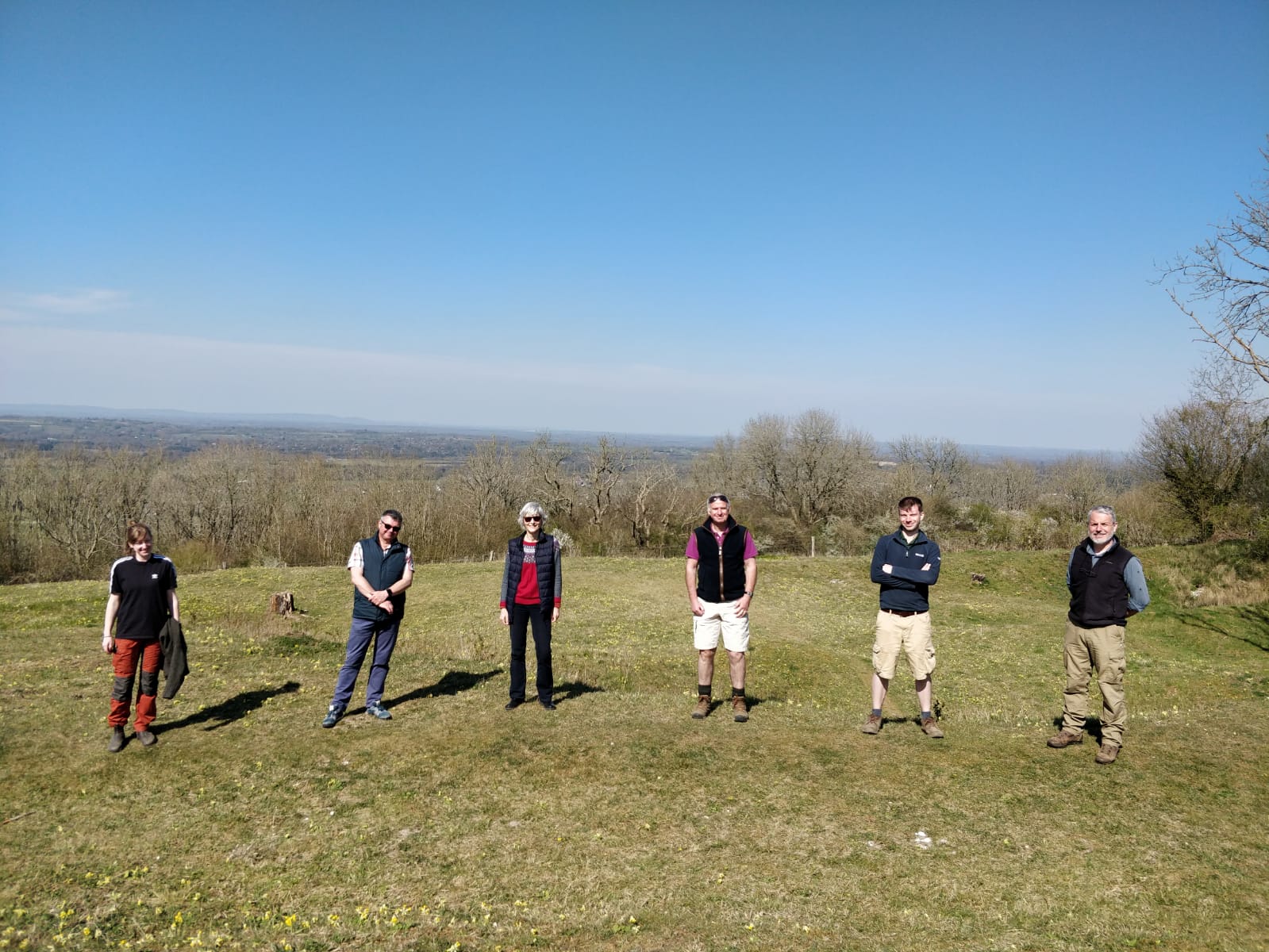
A socially-distanced visit to Parham Park for a training day to record special ancient and veteran trees to the ATI! ATI recorders Ailie, Steven, Hilary, Jeremy, Andrew and Tom (ATI Citizen Science Officer)
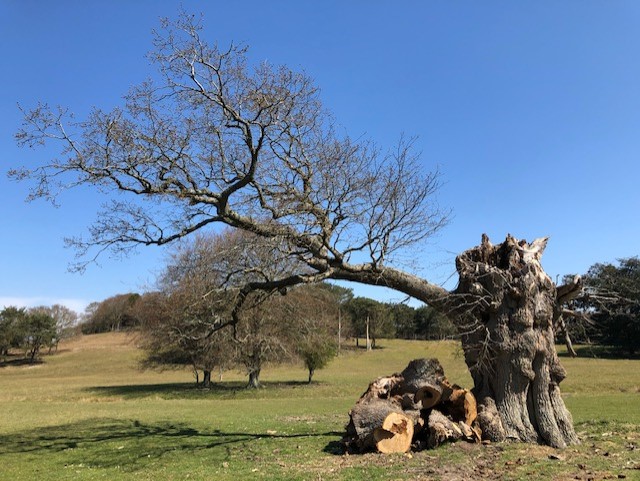
A veteran oak at Parham Park that has suffered some storm damage. With one living branch remaining, this tree is a true stalwart survivor!
2020 then, as everyone knows, became somewhat frustrating. COVID-19 meant most communication was suddenly remote and lockdowns were imposed. However, despite this, later that year, strategy documents were created, pilot surveys were conducted and training was completed to feed into the final version of the Survey Methodology document. Undeniably, this would not have been possible without Hilary’s dedication and management skills, with support from the rest of the team, and there was much joy and relief when, in December 2020, the deadline for completion of the project report was met - it had been a whirlwind year! Hilary remained involved with the Woodland Trust project team in a number of ways, including writing the Volunteer Plan that was part of the bid submitted to the National Lottery Heritage Fund, for the delivery phase of the Lost Woods project.
In her words “getting involved in the detail of the Lost Woods programme and bid-writing was second nature to me, as that is my profession! However, writing the contents of a Volunteer Plan was a steep learning curve. It was great to work with such a dedicated, knowledgeable and helpful team; I learnt a lot! It was a wonderful feeling to hear recently that the bid has been successful and the Lost Woods programme is going to happen. I can’t wait!”
With the additional funding secured, it is amazing to reflect on what has already been achieved, despite the challenges of recent years, and to look to the future as the next chunk of hard work begins. For now, the final words belong to Hilary, who has shown a deep passion for the project so far, words that will resonate with anyone who has stood in the shadow of a majestic ancient or veteran tree:
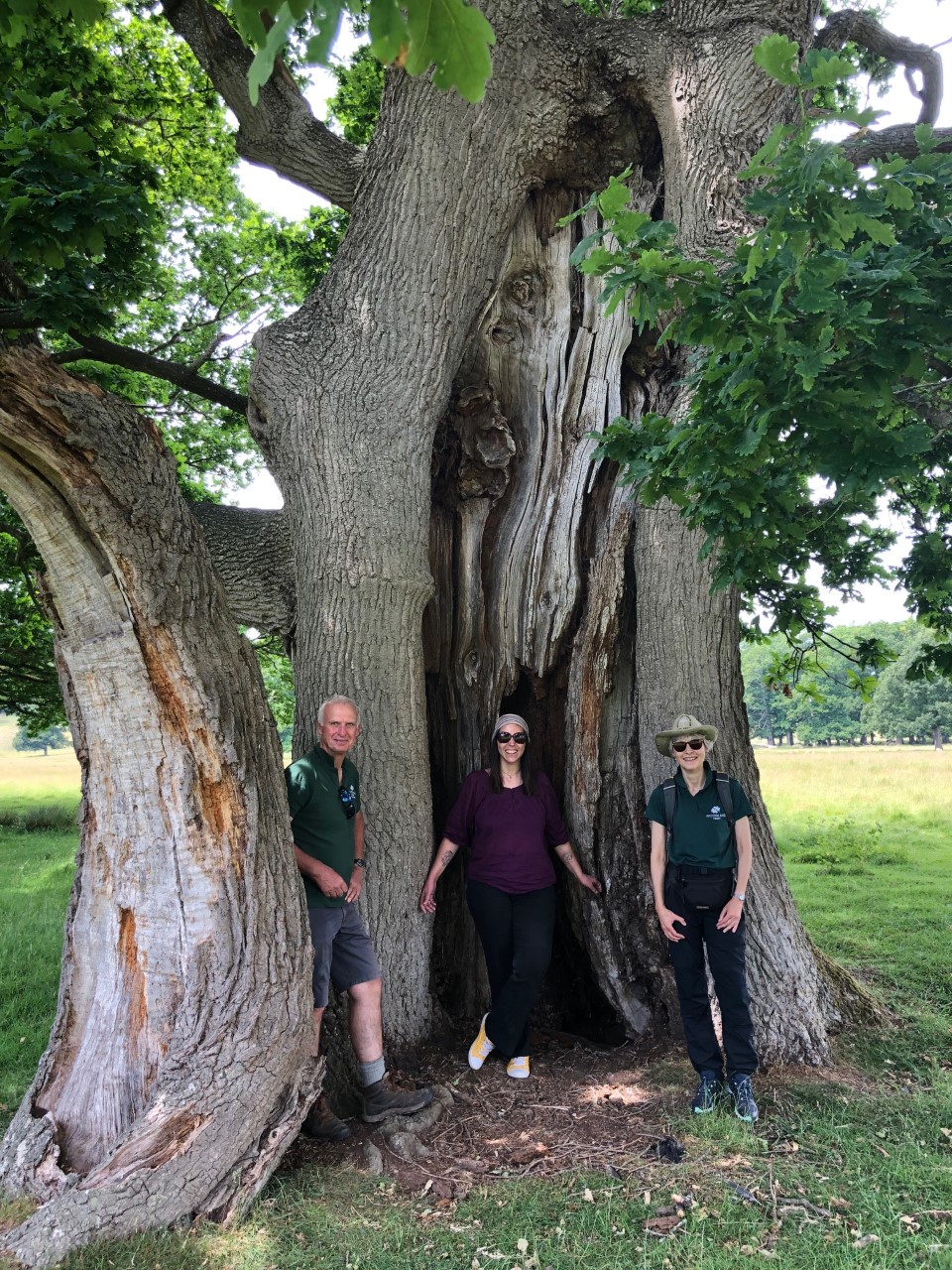
Jeremy, Anna (Volunteer Development Officer) and Hilary standing within the void of a hollowed ancient oak trunk.
“Wow – that is the first word that springs to my lips when I see an ancient or veteran tree, because many of them are huge!! They are like old friends, and I now hug trees rather more regularly than I ever thought I would! They are just stunning to look at, large or small and all have fascinating features- holes, hollowing, dead wood in the crown, fungi; the list goes on. These trees are part of our heritage and connect us to our history if we take the time to think about it, and they are something we must preserve for the future – our links to myth and legend and local folklore. Ancient and veteran trees make me happy – they have stood the test of time and, for me, they signify resilience, determination, success, fortitude and survival.”
Traits that you share with them, Hilary! We look forward to seeing what you bring to the Lost Woods Project next!
Huge thanks and congratulations to Hilary and her fellow volunteers (Jeremy, Andrew, Steven and Ailie) and members of the Lost Woods project team in securing additional funding for this important work.
For more information about the Lost Woods of the Low Weald and Downs project, please visit:
https://www.woodlandtrust.org.uk/about-us/where-we-work/england/lost-woods/
facebook.com/lostwoodssussex
